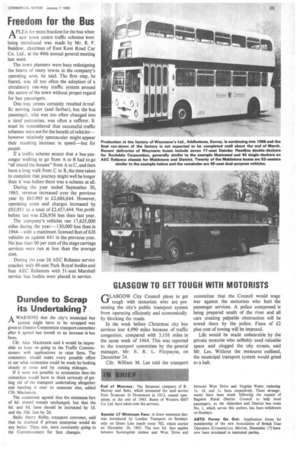Freedom for the Bus
Page 37

If you've noticed an error in this article please click here to report it so we can fix it.
PLEA for more freedom for the bus when new town centre traffic schemes were being introduced was made by Mr. R. P. Beddow, chairman of East Kent Road Car Co. Ltd., at the 49th annual general meeting last week.
The town planners were busy redesigning the hearts of many towns in the company's operating area, he said. The first step, he feared, was all too often the adoption of a circulatory one-way traffic system around the centre of the town without proper regard for bus passengers.
One-way streets certainly resulted in traffic moving faster (and farther), but the bus passenger, who was too often changed into a tired pedestrian, was often a sufferer. It must be remembered that successful traffic schemes were not for the benefit of veh ides— however relatively spectacular might appear their resulting increase in speed—but for people.
If a traffic scheme meant that a bus passenger wishing to go from A to B had to go "all round the houses" from A to C, and then have a long walk from C to B, the time taken to complete that journey might well be longer than it was before there was a scheme at all.
During the year ended September 30, 1965, revenue increased over the previous year by £65,995 to £2,686,644. However, operating costs and charges increased by £92,951 to a total of £2,457,444. Net profit before tax was £26,956 less than last year.
The company's vehicles ran 17,625,000 miles during the year-130,000 less than in 1964—with a maximum licensed fleet of 626 vehicles as against 641 in the previous year. No less than 60 per cent of the stage carriage services were run at less than the average cost.
During the year 26 AEC Reliance service coaches with 49-seat Park Royal bodies and four AEC Reliances with 51-seat Marshall service bus bodies were placed in service.




















































































































